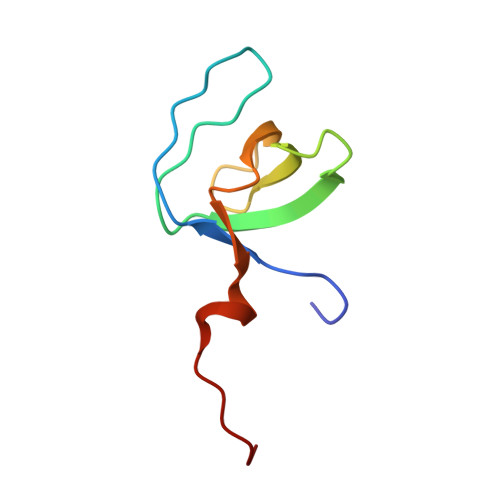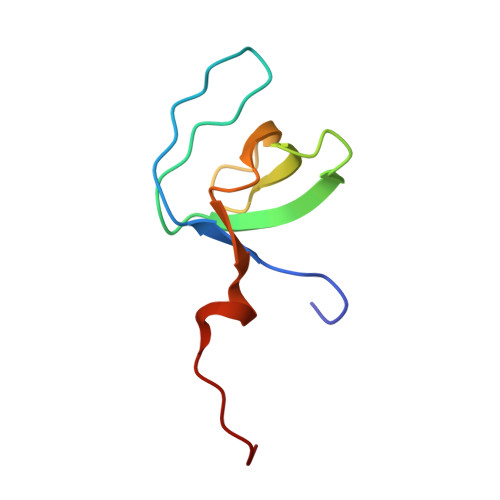A Model for the Signal Initiation Complex Between Arrestin-3 and the Src Family Kinase Fgr.
Perez, I., Berndt, S., Agarwal, R., Castro, M.A., Vishnivetskiy, S.A., Smith, J.C., Sanders, C.R., Gurevich, V.V., Iverson, T.M.(2022) J Mol Biology 434: 167400-167400
- PubMed: 34902430
- DOI: https://doi.org/10.1016/j.jmb.2021.167400
- Primary Citation of Related Structures:
7JT9 - PubMed Abstract:
Arrestins regulate a wide range of signaling events, most notably when bound to active G protein-coupled receptors (GPCRs). Among the known effectors recruited by GPCR-bound arrestins are Src family kinases, which regulate cellular growth and proliferation. Here, we focus on arrestin-3 interactions with Fgr kinase, a member of the Src family. Previous reports demonstrated that Fgr exhibits high constitutive activity, but can be further activated by both arrestin-dependent and arrestin-independent pathways. We report that arrestin-3 modulates Fgr activity with a hallmark bell-shaped concentration-dependence, consistent with a role as a signaling scaffold. We further demonstrate using NMR spectroscopy that a polyproline motif within arrestin-3 interacts directly with the SH3 domain of Fgr. To provide a framework for this interaction, we determined the crystal structure of the Fgr SH3 domain at 1.9 Å resolution and developed a model for the GPCR-arrestin-3-Fgr complex that is supported by mutagenesis. This model suggests that Fgr interacts with arrestin-3 at multiple sites and is consistent with the locations of disease-associated Fgr mutations. Collectively, these studies provide a structural framework for arrestin-dependent activation of Fgr.
Organizational Affiliation:
Department of Biochemistry, Vanderbilt University, Nashville, TN 37232-0146, USA; Center for Structural Biology, Nashville, TN 37232-0146, USA.


















